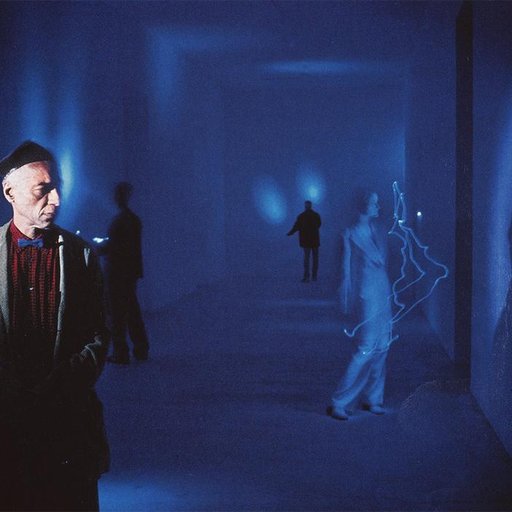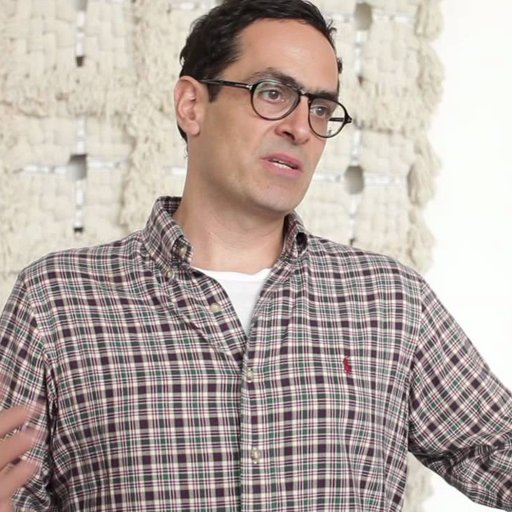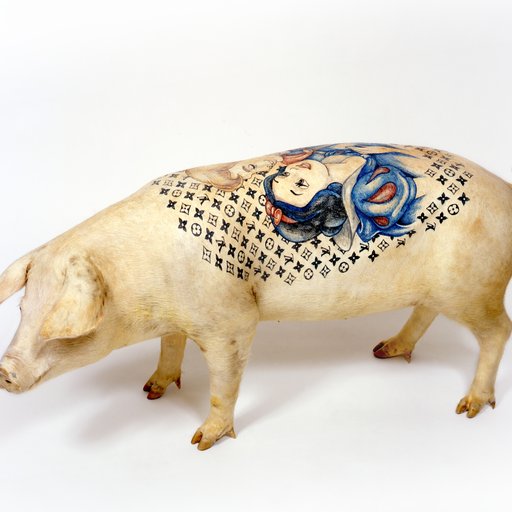In this excerpt from Phaidon’sAkademie X, the acclaimed conceptual photographer (and Kunstakademie Düsseldorf professor) Christopher Williams counsels aspiring artists on the subtitles of the profession, with advice on everything from reading materials and gallery relations to dental hygiene and Plexiglas avoidance. An artist who received at MoMA retrospective in 2014 and is represented by David Zwirner, Williams shares his hard-won insights into what it takes to build a successful art career.
Visual intelligence is very important. As the production of images changes and becomes faster with the computer and the internet, there's still a value to slowing perception down and studying things in detail. Learning about art is a perfect context for that kind of heightened seeing. This isn't about nostalgia for older ways of seeing, nor about pitting the accelerated looking of the computer against slow looking, but about promoting the value of slow looking.
You can promote slow looking through a close analysis, literally spending too much time looking at one thing. In art there are all kinds of techniques for doing that, but it really comes down to paying close attention and giving a close reading to whatever it is you're looking at. Hopefully the experience you get from paying close attention—in, a museum, for example—will key you to the fact that looking can be a pleasurable activity in any context.
Talking plays an important role in this kind of looking. I don't like art therapy, but I do think that in talking about art there is an element of psychoanalysis. When you tell someone what you're seeing, you learn more than you would if you hadn't put those thoughts into language. So it helps to talk to someone about art—and to listen.
To sharpen your visual sense it's important to look at painting and photography, but one of the best ways is to watch a lot of films—and to watch a lot of different kinds of films—because they give you twenty-four images per second.
LOOKING AT ART
I don't remember a time when I didn't look at art. It's always been a part of my life. I got seriously involved with art after I was kicked out of my art class in junior high school. I'd produced a drawing that my teacher found offensive, and I was put in a detention class for smart kids who were considered delinquent or something. We could choose two topics to study during that time, and we chose music and art. A great teacher, whose name escapes me right now, took us to the Ford Amphitheater to listen to free jazz and took us to the Pasadena Museum, where I was introduced to the work of Carl Andre, Marcel Duchamp, Joseph Cornell, Ellsworth Kelly, and Claes Oldenburg, among others. So it was an act of defiance—or maybe just an unconventional idea about drawing—that put me in contact with a bigger art world.
FORMATIVE EDUCATIONAL EXPERIENCE
CalArts, where I went to art school, was very open. Students' practices were not defined by a single medium. We were allowed and encouraged to do whatever we wanted. About five weeks into my first year I told one of my teachers that I had yet to receive an assignment. He said that there would be no assignments, because when we got out of school we wouldn't be fulfilling assignments. We would be working for ourselves, so why not start to work for ourselves now? They considered us artists, not students, and I carried that idea with me when I started teaching in the early 1980s. And I still do today. Another CalArts idea came from our teacher Douglas Huebler. Whenever we presented him with an idea for anything—an artwork or an artists' program or a film series—his answer was always, “Why not?” (He'd often follow it by saying, “It might not be good, but why not?”) CalArts really had a “why not?” attitude.
Sometimes people wait for the good ideas, but good ideas aren't the only things that produce good art. Sometimes, just picking up a bad idea and seeing how it works can produce something of value. So if you're sitting around waiting for inspiration or a foolproof idea, you're losing a lot of time.
So many young artists I meet don't seem to have understood that they're going to spend their whole lives as artists. They're in a hurry because they feel that if they're not a success right out of the gate they're going to be a lifelong failure. I encourage you to think in a much longer arc, to take it easy and do it for the long haul—not to have a preconceived idea of what success is in relation to a durational framework. Some artists are successful early on, others later.
Sometimes students also have misconceptions about what success is, mistaking the social aspects associated with success for actually making a successful artwork. To have a gallery, to have a big studio, and to make money isn't necessarily to make good art. Don't confuse those two things. I encourage you to think more historically and consider what your contribution to art could be, not about what your art practice can bring you in terms of material things.
ISSUE OF MEDIUM
Picking one primary medium and working strictly within it is unnecessary. It's not that it isn't an option, but it's one option among many. Especially today, artists are working in so many different media and disciplines, there's no reason to limit yourself to one. However, once you've chosen to work in a specific medium, it's important to know the history of that medium, its materiality, and how it functions technically. And as a late modernist artist I would say that it's very important to reflect upon your materials and the history of those materials.
I work primarily in photography. When I started, I really only intended to make a couple of works with it. I was interested in photography but not in being a photographer, and I certainly didn't think I was going to spend 35 years making primarily photographic works. Having said that, my idea of photography isn't confined to the idea of the camera and the print. I think of photography as an institution in which the print or the visual artifact is only one element in a network of other ways of signifying things.
So I consider the presentational devices—the framing, the mounts, the titles, the architectural situation, and the history of the institution presenting the show, the advertising, the posters, the catalogue, the essays in a catalogue—as all being an extension of the photographic institution. So then you have architecture, you have offset printing—the production of different kinds of language—which I see as being coextensive with the photographic surface.
I don't like to stand behind the camera or in front of the camera; I like to stand beside the camera. I figured out pretty early on—or I came up with the idea—that the camera is actually not the only agent involved in the production of meaning. There are also chemical designers, optical designers, and industrial designers. There are economic and social issues. So I try to move around the photographic program and occupy different positions at different times. Even though I didn't get assignments in art school, I do treat myself like a commercial photographer: I give myself assignments. I become a product photographer, or I become a photojournalist, and I pick a subject as though it were a journalistic assignment.
IMPORTANCE OF COLLABORATION
When it comes to dealing with galleries, my advice is not to hustle curators and dealers. Hang back and talk about other things. This isn't your only chance to show these people that you're interesting or to pull your slides out of your pocket. Instead, try to communicate the idea of collaboration. Often, young artists view curators, galleries, editors, publishers, etc., as a kind of service industry for them. But in the production of a show the curator and the essayist and the editor are actually your collaborative colleagues. You can't do everything. Ultimately, it's still an art-centered model, but the people you're working with are helping you achieve something that you can't necessarily do alone.
I've also been lucky enough to collaborate with some interesting artists. Two artists working together, or an artist and a writer—when it works, it produces a third element in the constellation, almost like a third person or a third subjectivity. In my best collaborations I think I emerge as another kind of artist. This isn't the place to name all the artists with whom I've worked, but my collaborations with people such as Albert Oehlen, Jeroen de Rijke, and Willem de Rooij, Mathias Poledna, and Martin Kippenberger have been really formative for me. For those reasons I strongly encourage young artists to collaborate.
WHAT AN ARTIST SHOULD DO EVERY DAY
Brush your teeth. And whatever you do, don't avoid the dentist for 35 years.
PAYING ATTENTION TO OTHERS
Pay attention to what other artists are doing. It gets harder and harder as the amount of art being produced keeps growing, but it's super important to know what your colleagues are up to. To be able to think about the present historically, you have to look at as much as you can right now. There's a more social aspect to it as well, which is that, if you expect people to pay attention to your work, you need to pay attention to theirs. If you don't care about your colleagues, they're going to be equally ungenerous to you. As artists become older and more successful, it's a very natural thing for them to withdraw and see fewer people and to look at less art. But artists such as John Baldessari and Ed Ruscha continue to go to galleries every month, getting to know younger artists and constantly looking at other people's work.
Young artists, especially, should be involved with each other. It's important to work together and try for things that might not at first seem achievable. You'll be surprised by what you can accomplish. And once you've found your community, be cool with those people, because you're going to know some of them for the rest of your life—which is a good thing and a bad thing. I was very fortunate in that regard. My colleagues at art school were Larry Johnson, Stephen Prina, Mike Kelley, John Miller, and a whole bunch of other really great people, who are still my friends and colleagues today.
ART HISTORY AND THEORY
It's important to study art history and art theory, but a distinction has to be made between making art and studying art history or theory. The practices of artists I find most interesting are those who think through their art or think through their materials and produce something like a theoretical model through their immersion in those materials and ideas, as opposed to taking ideas developed in philosophy or theory and then illustrating or applying them to the production of art. It's important to absorb as much information as possible but then to think through your materials. That doesn't mean just to think in terms of technique or to think visually but to really try to figure out the dimensions of your materials. Making a painting, for example, is different from writing. Language is a very different medium from paint.
READING
In my personal reading I find it's important to go beyond the realms of art history and art theory. I don't have a lot of time to read, so when I do read it's normally for information that I want to put to use in a project. Having said that, I've just had a long discussion with somebody about Thomas Bernhard's The Loser, which is a really fantastic book about a failed pianist whose entire life unfolds in the shadow of Glenn Gould's success. I think a work of fiction based on the moment one man realized that he was never going to be as good as Glenn Gould is a great book to give to aspiring artists.
MORE PRACTICAL ADVICE FOR YOUNG ARTISTS
1. No Plexiglas
2. No electricity
3. No humor
I don't like to throw rules at people, but if you follow those guidelines you'll be more likely to produce good art. Some of it's just practical. Plexiglas doesn't age well, so if you put it over something you've made, it's going to go milky and will get fine scratches when it's cleaned. Also, plastic is less optically precise than glass, so use glass in framing.
Electricity—again, it's just practical advice—is something that a lot can go wrong with. If you have a sound component in your work, for example, the minute you leave the installation the person at the front desk will turn down the sound, which means the sound level will never be where you want it. Twice, I took an hour-long train ride to see a friend's film installation, and twice the projector wasn't functioning—and these visits were two months apart.
The last rule—no humor—is so obvious I don't think I need to address it. Also—and this makes four rules—you shouldn't make anything you can't carry through the door yourself. This will ensure that everything is human scale and has a relationship to the body.
ASSIGNED READING, VIEWING, AND LISTENING
Reading:
– Betti, Laura, ed. Pier Paolo Pasolini: A Future Life. Bologna, Italy: Associazione Fondo Pier Paolo Pasolini, 1989.
– Buchloh, Benjamin. Neo-Avantgarde and Culture Industry: Essays on European and American Art from 1955 to 1975. Cambridge, MA: The MIT Press, 2000.
– Anything by T. J. Clark
– Anything by Thomas Crow
– Kelsey, John. Rich Text: Selected Writing for Art. Berlin: Sternberg Press, 2011.
– Kruger, Barbara. Remote Control: Power, Cultures, and the World of Appearances. Cambridge, MA: The MIT Press, 1994.
Kruger turns her eye to many things not considered art and deals with them as complex cultural objects, addressing them on the same level as she would an artwork. Her critical voice opened lots of doors for artists. And she's a great writer. Her language is just fantastic.
– Miller, John. When Down Is Up: Selected Writings. Frankfurt-am-Main: Revolver Verlag, 2001.
I guess it's obvious that a lot of what I read is artist's writings. Young artists should be exposed to as many different ways of being an artist as possible. Every artist I've mentioned uses language in a very different way. Realizing that you can adopt many voices is another thing I try to promote in my teaching.
– Robinson, Julia, ed. John Cage. Cambridge, MA: The MIT Press, 2011.
– Stemmrich, Gregor and Gerti Fietzek, eds. Having Been Said: Writings and Interviews of Lawrence Weiner 1968–2003. Berlin: Hatje Cantz, 2004.
There are two artists I turn to when I need to refocus and think about what I'm doing. One is Marcel Broodthaers, and the other is Lawrence Weiner. This book is an invaluable studio tool. Weiner's writing is very open and general, but it allows me to focus my thoughts.
Viewing:
– Bresson, Robert, dir. Au Hasard Balthazar. Cinema Ventures, 1966. Film.
– Godard, Jean-Luc, dir. 2 ou 3 Choses que Je Sais d'Elle (2 or 3 Things I Know About Her). The Criterion Collection, 1967. Film.
– Any Buster Keaton film
– Marker, Chris, dir. Sans Soleil. Argos Films, 1983. Film.
Listening:
– The entire recorded works of the Melvins
The Melvins are one of the most intelligent rock bands of the last 30 years.
– Anything by Sun Ra
READ MORE FROM AKADEMIE X ON ARTSPACE:
6 Art-World Lessons From the Unorthodox Classroom of Akademie X
Chris Kraus on the Ambiguous Virtues of Art School
Words to Live By: Marina Abramović's Mystical Maxims for Artists
Venice Biennale Representative Joan Jonas's Workout Regimen for Artists
The Four-Hour Art Week? Read Carol Bove's Self-Help Guide for Artists
Sanford Biggers’s Tough-Love Guide to Surviving the Art World
Go On a New York City Scavenger Hunt With Artist Mark Dion
Ólafur Elíasson’s 9 Foolproof Tips for Urban Inspiration
Painter Carrie Moyer on Her Polyamorous Relationship With Art
Wangechi Mutu’s Words of Wisdom for Struggling Artists
























